| Columns Retired Columns & Blogs |
Great review of what seems to be a great product!
Makes me want to shop!

This dialectic can sometimes play out within the same company. Abbingdon Music Research (AMR), which is based in Southport, UK, was founded in 2000. At first, under the AMR brand, the company focused on high-end audio component separates with price points toward the upper end of the spectrum. The world has a way of intervening, though, even with the best-laid business plans. AMR Director Vince Luke describes in a video how his company made a deliberate choice to "pivot from high end to low end" following the financial crash of 2008. AMR's iFi Audio division debuted at the Rocky Mountain Audio Fest in 2012, offering a handful of portable products. They were a hit. The iFi line has since expanded to include more than 50 designs, and new products are introduced with impressive frequency.
Luke addressed the topic of cost recently when I spent some quality Zoom time with him. "Everyone in the industry has a role to play to bring in the younger generation, and making things more and more expensive is not really the best way to go about that. All of what we do is to bring a good dose of ultra-fi to the normal market. In England in the car business, they call it 'Smiles per Mile.'"
The iFi Audio NEO Stream ($1299) is a small one-box unit that combines streamer and DAC functions that previously were offered by iFi as separates. Many products currently offered by iFi are housed in cute, curved trapezoid chassis that bring to my mind friendly little robots traipsing on the surface of Mars. Even with miniaturization, though, there are limits to how much circuitry can be crammed into a box that size and shape. Still, the NEO Stream is housed in an elegant rectangle that measures just 8" × 1.6" × 5" and weighs a little over 2lb.
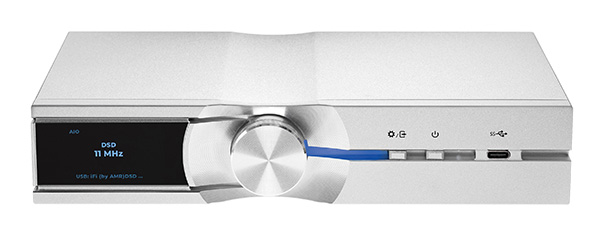
In the weeds
I've been impressed recently by the number of connectivity options on the back panels of hardware I've reviewed, but the NEO Stream takes the cake, especially considering the small amount of real estate involved. Flip the NEO Stream around and you'll see M12 and RJ45 Ethernet inputs, two USB Type A jacks (both input and output), a USB-C connection for system updates, an optical Ethernet input (more about this one later), and a Wi-Fi antenna connector. What about outputs? There's 12S, HDMI, TosLink, coax S/PDIF, AES3, a 4.4mm balanced analog stereo output, and a single pair of analog outputs on RCA.
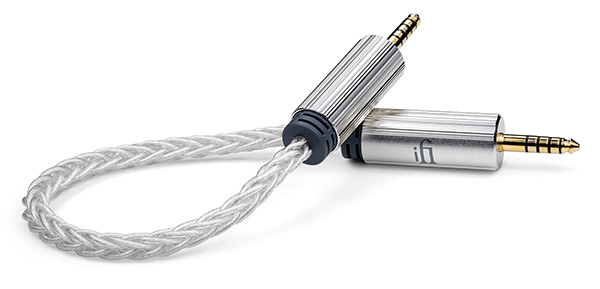
Note the two different types of analog outputs, including balanced. That is unusual for a unit of subcompact size and at this budget price. It is facilitated by the 4.4mm balanced input. I'd have thought I had encountered every type of interconnect out there by now, but this one was a new one for me. iFi Audio offers, as an option, a cable terminated with a 4.4mm plug on the input end split on the output end to a stereo pair of cables terminated with XLR connectors. This was how I ran the NEO Stream into my balanced systems for auditioning.
The front panel of the iFi NEO Stream is more streamlined than the back. There's a small TFT display, a multifunction rotary knob, a network-status LED, a Menu/Output selector switch, a power switch, and a USB-C input. There is no headphone jack; if you want to use the NEO Stream with headphones, you must pair it with a headphone amplifier. iFi offers several.
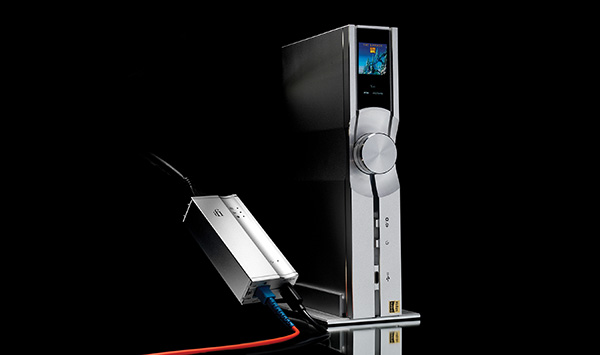
A generous amount of additional hardware comes in the box. There's a metal stand for mounting the unit vertically; the front-panel display rotates when you do this. There's an AC-to-9V DC power supply that appears to be of high quality; iFi says it's low-noise. There's an RJ45 Ethernet cable, a stereo RCA cord, a USB-A–to–USB-C cord, and, most interestingly, a small "OptiBox" transceiver (above), which is powered by a supplied AC-to-USB-C adapter, and a companion SC optical interconnect. The OptiBox converts an incoming electrical Ethernet signal to optical; this optical signal—which of course is incapable of carrying electronic noise-then enters the NEO Stream via a single-mode SC cable. (Exploiting this feature requires gigabit Ethernet.)
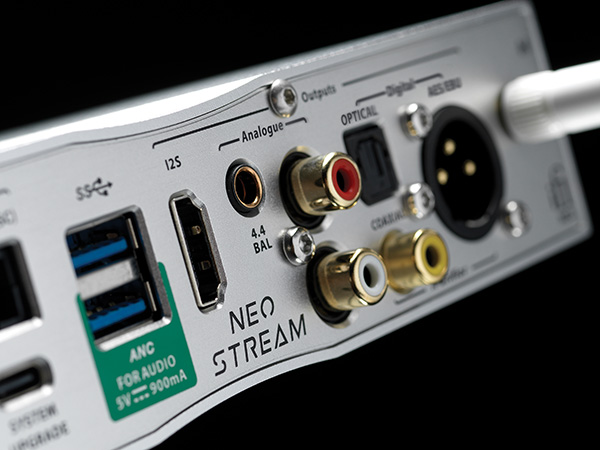
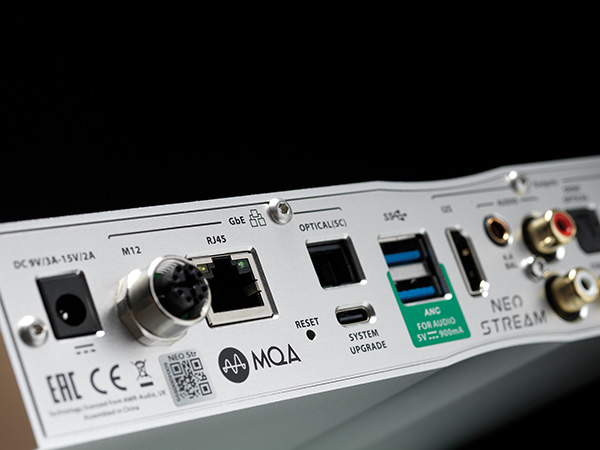
Those inputs support up to 32/768 PCM with full MQA decoding, native DSD decoding up to DSD512 (via LAN or Wi-Fi with a 5GHz signal), Tidal Connect, Spotify Connect, Roon Ready, AirPlay, DLNA/UPnP, and NAA. The analog section runs fully balanced. There's a choice of four digital filters ("Bit Perfect," "Gibbs Transient Optimized," "Minimum Phase," and "Standard") and "Exclusive Streaming Modes" for Tidal, Roon, NAA, and DLNA; each can be set up separately with your preferred settings. iFi's "femto-precision Global Master Timing clock" is said to eradicate jitter. ANC II active noise cancellation is supported on the USB ports. "iPurifier" circuits are said to remove distortion on the S/PDIF outputs.
iFi emphasizes the advantages of the NEO Stream's open-source architecture, which can work with several control apps. For a product at this price point, the NEO Stream offers some impressive name-brand hardware: Panasonic OS-CON, TDK C0G, and muRata capacitors; a Burr-Brown, four-channel "True Native" DAC chip with separate paths for DSD and PCM; and a new 16-core XMOS microprocessor with double the clock speed and four times the memory found in the previous generation product, which I think is the iDSD. It's a lot of firepower in an affordable, compact package.
Together with a small selector switch labeled Menu/Output, the multifunction front-panel knob facilitates setup and feature selection: volume control (fixed or variable); mute; screen brightness; output choice (analog, digital, USB); Bluetooth on/off (for setup only); "System Mode" (Tidal with full MQA decoding, Roon, NAA, DLNA, or AIO "All in One"); and digital filter (I chose "Bit Perfect"). Even with the selections showing up on the small front-panel display, that is a lot to keep straight. No hardware remote is supplied.
Good sound starts at the wall. Art Dudley and I agreed that one of the perks of a rural upstate New York location like Albany or Cooperstown is that the power grids are stable and not inherently noisy. I have added to that power grid a dedicated circuit with hospital-grade receptacles, and for some time I have run all the gear in my Upstairs system through an AudioQuest Niagara 7000. Teeing off from there is the NEO Stream's aforementioned "iFi Power X" wall wart; iFi says the Power X includes "Active Noise Cancellation, a MOSFET transformer, RF-designed PCB," and a "filtering capacitor." iFi says this power supply is "1000 times quieter than conventional SMPS [switch-mode power supply] wall adapters."
In addition to cleaning up the power, the iFi NEO Stream goes to serious lengths to clean up incoming signals. For those choosing to go the wired Ethernet route, included with the NEO Stream is a separate, cigarillo-sized unit that iFi calls the OptiBox. This little piece is powered by its own USB-C adapter and cable. The OptiBox converts electrical Ethernet to optical output, which travels over the provided SC optical cable and enters the NEO Stream at its own optical connection Vince Luke described to me this way: "We have a little bit of R&D, so we are able to design some unusual solutions for home audio. Running any long cable isn't good, so you want to do something about that. One of the things we came up with was putting in an optical galvanic isolation solution. Break the connection, and sort of like Gandalf, 'You shall not pass.'" The Balrog in this case is noise. The OptiBox doesn't pass "the spurious Gremlin-like stuff that gets picked up along the way." Using the OptiBox isn't essential-there are two standard Ethernet inputs on the NEO Stream's back panel-but why wouldn't you? (footnote 1)
Ask anyone I've ever worked with in a studio: When I walk in, things break. The Tech Gremlins have it in for me. And so it was with the iFi NEO Stream. Immediately after I unboxed the little iFi, my reference ARC REF6SE preamplifier blew up, and I mean that literally. No, it wasn't the NEO Stream's fault; it wasn't even connected yet. I heard a huge "bang" then found shrapnel inside from an exploded wire-wound resistor. My friend Steve Rowell, owner of Audio Classics in Binghamton, was kind enough to loan me a replacement preamp: a McIntosh C2700 tube preamplifier, a model I know well, so I was able to carry on.
Then the Tech Gremlins got to work on the NEO Stream. Nothing worked as it was supposed to. I got my computer helper Paul to stop by, and after wrestling with it, he confirmed what the Poet said: "Everything is broken." I capitulated and requested a new NEO Stream. Make sure you register your product warranties.

I was going to ask the same thing. Assuming there’s at least some sort of app for smartphone or tablet to function as a remote. This is the most likely scenario these days.
There has to be some sort of remote control functionality available.

.... so you can access it with a web browser. If you're just using it as a Roon or similar end-point, then that is unnecessary.

Like so many devices these days, an available app from iFi installed on your phone functions as the 'remote.' As I noted above: "The 'Stream-iFi' app operates locally, connecting to the NEO Stream via Wi-Fi."

for those of us unfamiliar with Ifi "stream-iFi" app, I didn't catch this part because it didn't include the word "remote". And more information on the functionality of such app and how it works as a remote would've been nice. Thanks!

as I deduct from the measurements, is actually no filter at all. Frequency response looks close to what comes out of a DAC chip which has no reconstruction filter.
